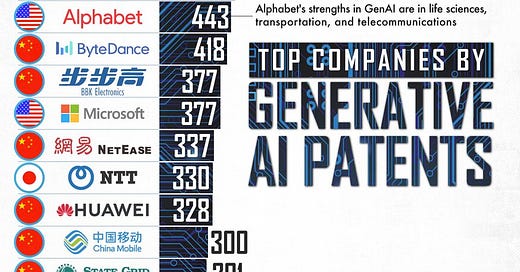China's AI Edge: A Supply Chain and 5 Million AI Professionals. Today.
Imagine our high schools offering electives in AI applications for finance, healthcare, or autonomous vehicles. Theirs do.
The policy goals and discourse surrounding AI are different in China than in the United States. Chinese leaders want AI to advance the country’s economic development and military capabilities. In Washington, the AI policy discourse is sometimes framed as a “race to AGI [artificial general intelligence].”[5] In contrast, in Beijing, the AI discourse is less abstract and focuses on economic and industrial applications that can support Beijing’s overall economic objectives. Full Stack: China's Evolving Industrial Policy for AI by Kyle Chan et al, RAND.
China takes AI so seriously that Chairman Xi and the six-man Politburo Standing Committee recently booked a one-day seminar with the world’s top AI researchers to discuss the implications of their their labs’ current investigations for the country’s future. Five years ago, another such seminar resulted in the 2017 Next Generation Artificial Intelligence Development Plan. Here is the school curriculum that helped prepare five million people for tertiary education and careers in AI. As you scan it, imagine your high school offering electives in AI applications for finance, healthcare, or autonomous vehicles–because
theirs do:
Early Exposure (Ages 6–11, Primary School)
Grades 1–3: Basic computational thinking through games and puzzles (e.g., block-based coding like Scratch).
Grades 4–6: Introductory programming (Python basics) and simple AI applications (e.g., voice recognition, smart home devices).
Extracurriculars: Robotics clubs and AI-themed competitions (e.g., MakeX Robotics). Shanghai’s primary schools use AI-powered toys like programmable drones to teach logic.
2. Formal AI Curriculum (12–18, Secondary School)
Middle School (Grades 7–9): Mandatory Information Technology (e.g., machine learning basics, ethics). Hands-on projects: Training image-recognition models (using tools like Baidu’s PaddlePaddle).
High School (Grades 10–12): Advanced Python/R programming, neural networks and big data analysis. Electives: AI applications in finance, healthcare, or autonomous vehicles.
3. Specialized Programs (Elite Schools)
AI Pilot Schools: Fifty model schools, like Beijing No. 4 High School, offer:
Deep Learning labs with NVIDIA GPUs.
Partnerships with Huawei, Alibaba for cloud AI tools.
Competitions. The National Youth AI Innovation Challenge (ages 10–18) attracts 500,000 young participants annually.
4. Higher Education & Vocational
University: AI majors (e.g., Tsinghua’s AI Institute) recruit top students.
Vocational Schools: AI maintenance and implementation courses (e.g., industrial robotics).
China’s AI supply chain has jobs for all of them:






China is proving that it is a numbers game. The more minds you free up to look at a problem the better the quantitative results, but more importantly, the better the qualitative result ie more 'geniuses' emerge
Mein Gott, Godfree, the sophistication of these syllabi is astonishing. Unless and until Western educational institutions learn to think and plan for the long-term, they haven’t a hope in hell of ever ‘containing’ China. In fact, the obverse will be true.
The Chinese will have the Empire and its vassals vacuum packed, tied with a bow and loaded into containers. Indeed, with 5 million already trained, or soon to be, one can say the race to develop fusion power and quantum computing will be won by China
And then will come the end of block chain and digital currencies, with all that implies.